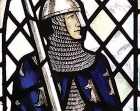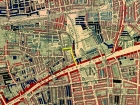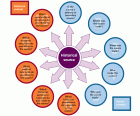Evidence
The use of sources within history lessons has consistently been included within the National Curriculum in England and as a specific assessment objective at GCSE and A-level, on the grounds that unless students know how claims about the past are generated and validated within the subject community, they will be poorly equipped to make sense of or to discriminate between conflicting claims about the past. While the use of sources depends on a process of critical evaluation, history teachers and curriculum designers are now very aware of the risks associated with reducing such evaluation to a series of mechanistic formulae in which ‘source work’ is detached from the enquiry process of answering specific and worthwhile questions about the past. The materials in this section help alert teachers to those risks as well as illuminating important misconceptions that may prevent students from developing a more powerful conception of the nature of historical knowledge The resources here offer a range of practical strategies, rooted in academic and practitioner research, for equipping students to use sources of many different kinds as evidence (rather than merely passing judgment on them). Read more
-

Using oral history to enhance a local history partnership
ArticleClick to view -

Questions and answers about questions and answers
ArticleClick to view -

Touching, feeling, smelling, and sensing history through objects
ArticleClick to view -

Cunning Plan 181: Incorporating a more global perspective within Key Stage 3
ArticleClick to view -

Beyond slavery
ArticleClick to view -

‘What is history?’ Africa and the excitement of sources with Year 7
ArticleClick to view -

Being an historian
ArticleClick to view -

Transatlantic slavery – shaping the question, lengthening the narrative, broadening the meaning
ArticleClick to view -

Year 9 use sources to explore contemporary meanings and understandings of appeasement
ArticleClick to view -

Film: What's the wisdom on... Evidence and sources
ArticleClick to view -

Historical scholarship, archaeology and evidence in Year 7
ArticleClick to view -

The dialogic dimensions of knowing and understanding the Norman legacy in Chester
ArticleClick to view -

Using an anthology of substantial sources at GCSE
ArticleClick to view -

Move Me On 170: adapting to a second school
ArticleClick to view -

Right up my street: the knowledge needed to plan a local history enquiry
ArticleClick to view -

Building the Habit of Evidential Thinking
ArticleClick to view -

Inverting the telescope: investigating sources from a different perspective
ArticleClick to view -

Developing independent learning with Year 7
ArticleClick to view -

Teaching the very recent past
ArticleClick to view -

How do you construct an historical claim?
ArticleClick to view

